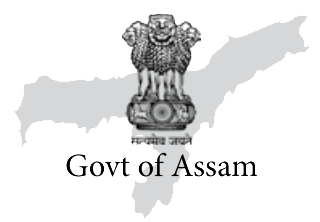About two km north of Pobitora Wildlife Sanctuary, famed for the highest concentration of one-horned rhinoceros in a wildlife protected area in the world, in Morigaon district is the Murkata (No.1) village on the bank of Brahmaputra.
A flood- and erosion- prone area, greater Murkata’s habitation has been reducing in recent years forcing villagers to move away to safer areas to get rid of their annual woes.
“Last year, a major erosion took place here. The Brahmaputra river moved about a kilometre from its original route towards south. The length of this erosion on the bank is more than two kilometres. We lost several villages to erosion,” Bhajan Mandal (55), a native said.
“I am living in a temporary shed near a recently constructed embankment since losing my house and farm last year. The river swallowed our village. The lower primary school and a Durga Mandir were washed away by floods,” said Ranjit Mandal (45) a native of the village under the Mayong revenue circle, while recalling the disaster.
Octogenarian Rabindra Nath Bharali (80) said that in the last two decades at least 100 villages have been eroded fully or partially along the stretch from Mayong to Laharighat in the district. “The width of the river in the last few years has been increasing, about three km towards the south. Now, it the river waters have hit the Kasosila Pahar and moved backward towards our village. Kasosila, till last year, was a River Dolphin View Point for tourists. The view point is no more there,” rued Bharali.
Similarly, in Darrang district, nearly 500 villages were flooded in 2022. The floods caused by heavy rains and breach of the embankments of Saktola and Nonoi rivers wreaked havoc in the district.
Flood waters on the National Highway 15 from Bordoulguri to Pipradokan compelled the district authority to close the stretch from Piporadokan to Saktola bridge for five days. The turbulent Nonoi River breached its embankment at five stretches.
Last year in the month of June, Borthekeraguri area under Mangaldoi Revenue Circle also witnessed a major breach of embankment by the Saktola River.
Incidents like these have forced the Water Resources Department in the State on an overdrive these days anticipating flood and erosion so as to minimise their effect on life and livelihood.
Officials told Asom Barta that one of the major areas of attention of the Department this year was on closing the 41 breaches in 26 embankments which occurred in 2022 besides the three places where locals had to cut, as a desperate measure, embankments to save their homes and hearth.

These breaches occurred due to incessant rainfall in the entire region and in the upper catchment areas. Sources in the Department claim that had they not moved swiftly, breaches would have occurred in more than 100 places in different embankments. They say that most of the embankments of the State were constructed during the late 1960s and have already outlived their life span.
Last year, Chief Minister Dr. Himanta Biswa Sarma directed the Department to strengthen embankments. Accordingly, more than 575 crores were released under 22 schemes. These breaches have accordingly been plugged, while the most vulnerable portions of the embankments have been recouped for the expected flood. Besides, measures have also been undertaken to strengthen dykes (240.43km), and protection work (48.02km).
Dipak Bhattacharya, Executive Engineer with the WR Department told this reporter that it had completed major work on the 9.5 km-long embankments of Saktola River from the Mangaldoi–Pathorighat–Khoirabari Road to Rangamati-Kuruwa point.
Md Khoyaj Ali (55) of Kotohuguri village testified that the embankment of Saktola constructed this year at Borthekeraguri portion is far better than the previous one. In Bor Athiabari, villagers like Hyder Ali (68) are happy to see a new embankment at the breached point of Saktola River.
The State Government is shifting to the permanent concept of road-cum-embankment by replacing the ageing embankments built in the State between 1954 and 1974 as short-term measures after the devastating 1950 earthquake. This is being done under the Assam Embankment and Road – Assam scheme.
Besides, the Department has identified 108 vulnerable reaches requiring immediate attention.
Erosion has been a regular occurrence in the subdivision of Bhuragaon, Laharighat and Mayong under Morigaon district. The erosion is especially attributed to extreme sediment charge to the braided river and the formation of sand bars within the midst of the river.
The Water Resources Department has undertaken anti-erosion measures at Murkata with an estimated expense of ₹ 9.83 cr. “We have used Geo bags as part of the anti-erosion measures”, said Lochan Choudhury, Executive Engineer, WRD, Morigaon district, adding that the construction of embankment is nearing completion.
Villagers are hopeful that Geo bag-induced anti erosion measures will be able to save the greater Murkata area. “The present Government is interested in solving the problem. We have seen use of Geo bags in anti-erosion measures for the first time at Murkata, said Bharali, a tinge of optimism visible
in his eyes.













